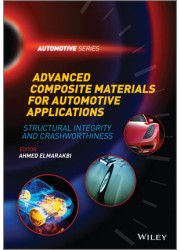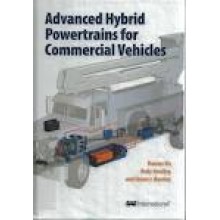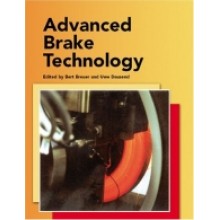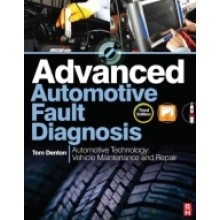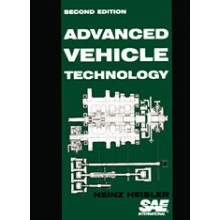Your shopping cart is empty!
Welcome visitor you can login or create an account
Advanced Composite Materials For Automotive Applications
Our Price: $135.00
Quantity:
-
Add to Compare
| Description: The automotive industry faces many challenges, including increased global competition, the need for higher-performance vehicles, a reduction in costs and tighter environmental and safety requirements. The materials used in automotive engineering play key roles in overcoming these issues: ultimately lighter materials mean lighter vehicles and lower emissions. Composites are being used increasingly in the automotive industry due to their strength, quality and light weight. Advanced Composite Materials for Automotive Applications: Structural Integrity and Crashworthiness provides a comprehensive explanation of how advanced composite materials, including FRPs, reinforced thermoplastics, carbon-based composites and many others, are designed, processed and utilized in vehicles. It includes technical explanations of composite materials in vehicle design and analysis and covers all phases of composite design, modelling, testing and failure analysis. It also sheds light on the performance of existing materials including carbon composites and future developments in automotive material technology which work towards reducing the weight of the vehicle structure. |
|
| Book Feature: Chapters written by world-renowned authors and experts in their own fields Includes detailed case studies and examples covering all aspects of composite materials and their application in the automotive industries Unique topic integration between the impact, crash, failure, damage, analysis and modelling of composites Presents the state of the art in composite materials and their application in the automotive industry Integrates theory and practice in the fields of composite materials and automotive engineering Considers energy efficiency and environmental implications Advanced Composite Materials for Automotive Applications: Structural Integrity and Crashworthiness is a comprehensive reference for those working with composite materials in both academia and industry, and is also a useful source of information for those considering using composites in automotive applications in the future |
|
| Contents: Part One FUNDAMENTAL BACKGROUND Chapter 1. Overview of Composite Materials and their Automotive Applications 1.1 Introduction 1.2 Polymer Composite Materials 1.3 Application of Composite Materials in the Automotive Industry 1.4 Green Composites for Automotive Applications 1.5 Modelling the Mechanical Behaviour of Composite Materials 1.6 Discussion 1.7 Conclusion Chapter 2. High-Volume Thermoplastic Composite Technology for Automotive Structures 2.1 Introduction – Opportunities for Thermoplastic Composites 2.2 Recent Developments in Automotive TPCs 2.3 Case Study: Rapid Stamp-Formed Thermoplastic Composites 2.4 Conclusion Chapter 3. Development of Low-Cost Carbon Fibre for Automotive Applications 3.1 Introduction 3.2 Research Drivers: Energy Efficiency 3.3 Lightweight Automotive Materials 3.4 Barriers to Carbon Fibre Adoption in the Automotive Industry 3.5 Global Production and the Market for Carbon Fibre 3.6 Low-Cost Carbon Fibre Programme 3.7 International Cooperation Part Two IMPACT AND CRASH ANALYSIS Chapter 4. Mechanical Properties of Advanced Pore Morphology Foam Composites 4.1 Introduction 4.2 Cellular Materials 4.3 Advanced Pore Morphology Foam 4.4 Mechanical Properties of Single APM Foam Elements 4.5 Behaviour of Composite APM Foam 4.6 Conclusion Chapter 5. Automotive Composite Structures for Crashworthiness 5.1 Introduction 5.2 Traffic Safety 5.3 Alternative Vehicles 5.4 Selective Overview of Worldwide Crash Tests 5.5 Structural Crash Management 5.6 Composite Materials for Crash Applications 5.7 Energy Absorption of Composite Profiles 5.8 Conclusion Chapter 6. Crashworthiness Analysis of Composite and Thermoplastic Foam Structure for Automotive Bumper Subsystem 6.1 Introduction 6.2 Materials for Automotive Applications 6.3 Composite and Thermoplastic Materials 6.4 Numerical Modelling of Fiat 500 Frontal Transverse Beam 6.5 Standards for Low-Speed Frontal Impact 6.6 Bumper Beam Thickness Determination 6.7 Results and Discussion 6.8 Conclusion Chapter 7. Hybrid Structures Consisting of Sheet Metal and Fibre Reinforced Plastics for Structural Automotive Applications 7.1 Introduction and Motivation 7.2 Conventional Method for the Development of Composite Structures 7.3 Approaches to Automotive Lightweight Construction 7.4 Requirements for Automotive Structures 7.5 Simulation 7.6 Manufacturing 7.7 Testing 7.8 New Methodology for the Product Engineering of Hybrid Lightweight Structures 7.9 Conclusion Chapter 8. Nonlinear Strain Rate Dependent Micro-Mechanical Composite Material Model for Crashworthiness Simulation 8.1 Introduction 8.2 Micro-Mechanical Formulation 8.3 Strain Rate Dependent Effects 8.4 Numerical Results 8.5 Conclusion Chapter 9. Design Solutions to Improve CFRP Crash-Box Impact Efficiency for Racing Applications 9.1 Introduction 9.2 Composite Structures for Crashworthy Applications 9.3 Geometrical and Material Characterisation of the Impact Attenuator 9.4 Experimental Test 9.5 Finite Element Analysis and LS-DYNA 9.6 Comparison between Numerical and Experimental Analysis 9.7 Investigation of the Optimal Solution 9.8 Conclusion Part Three DAMAGE AND FAILURE Chapter 10.Fracture and Failure Mechanisms for Different Loading Modes in Unidirectional Carbon Fibre/Epoxy Composites 10.1 Introduction 10.2 Delamination Failure 10.3 Objectives 10.4 Experimental Programme 10.5 Numerical Simulations 10.6 Fractography 10.7 Results and Discussion 10.8 Conclusion Chapter 11. Numerical Simulation of Damages in FRP Laminated Structures under Transverse Quasi-Static or Low-Velocity Impact Loads 11.1 Introduction 11.2 Theory 11.3 Techniques for Overcoming Numerical Instability in Simulation of Delamination Propagation 11.4 Numerical Examples 11.5 Conclusion Chapter 12. Building Delamination Fracture Envelope under Mode I/Mode II Loading for FRP Composite Materials 12.1 Introduction 12.2 Experimental Studies 12.3 Mode I Delamination Testing: Double Cantilever Bending Test Analysis and Results 12.4 Mode II Delamination Testing: End Notched Flexure Test Analysis and Results 12.5 Mixed Mode I/II Delamination Testing: Mixed-Mode Bending Test Analysis and Results 12.6 Fracture Failure Envelope 12.7 Conclusion Part Four CASE STUDIES AND DESIGNS Chapter 13. Metal Matrix Composites for Automotive Applications 13.1 Automotive Technologies 13.2 Reinforcements 13.3 Automotive Applications 13.4 Conclusion Chapter 14. Development of a Composite Wheel with Integrated Hub Motor and Requirements on Safety Components in Composite 14.1 Introduction 14.2 Wheels Made from FRPs 14.3 Development of a Composite Wheel with Integrated Electric Motor 14.4 Multifunctional Design – Requirements regarding Structural Durability and System Reliability 14.5 Conclusion Chapter 15. Composite Materials in Automotive Body Panels, Concerning Noise and Vibration 15.1 Introduction 15.2 Composite Materials in Automobile Bodies 15.3 Multilayer Composite Materials in Noise and Vibration Treatment 15.4 Case Studies 15.5 Conclusion Chapter 16. Composite Materials for Automotive Braking Systems 16.1 Introduction 16.2 Materials Requirements for Brake Rotors 16.3 Cast Iron Rotors 16.4 Carbon Composite Rotors 16.5 Light Alloy Composite Rotors 16.6 Evaluation of Composite Disc Materials 16.7 Surface Engineering of Light Alloy Brake Discs 16.8 Friction Material 16.9 Conclusion Chapter 17. Low-Cost Carbon Fibre: Applications, Performance and Cost Models 17.1 Current and Proposed Carbon Fibre Applications 17.2 Carbon Fibre Polymer Composites: Cost Benefits and Obstacles for Automobiles 17.3 Performance Modelling 17.4 Cost Modelling 17.5 Conclusion |
Write a review
Your Name:Your Review: Note: HTML is not translated!
Rating: Bad Good
Enter the code in the box below:
Price subject to change without notice
Copyright © 2014 Engineering Standards Bureau. All Rights Reserved.
Developed By Zoom Into Web
Copyright © 2014 Engineering Standards Bureau. All Rights Reserved.
Developed By Zoom Into Web


